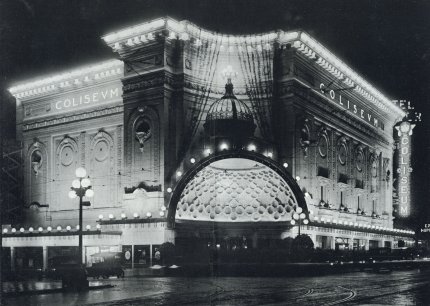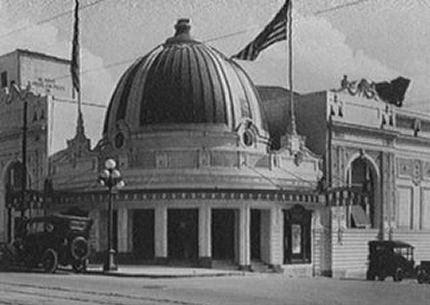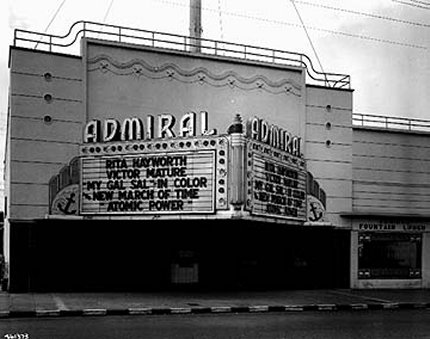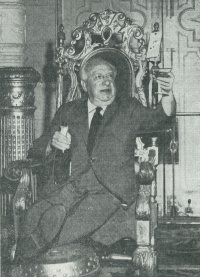

|

Northwest Theatre Organ History
Back to the Northwest Theatre Organ History page
B. Marcus Priteca (1889-1971)

Marcus Priteca onsite at the
Coliseum Theatre, c. 1916 |
Benjamin Marcus Priteca was born and raised in Scotland. He moved to the United States at a young age, and settled in Seattle after becoming an architect. He is widely regarded as one of the great theater architects in the United States, though he considered himself "just an old vaudeville architect." As such, Priteca was a devotee of the old-style theater interior--graceful curving balconies, sloping floors and good sight lines. "Seeing is hearing," he said, in partial explanation of his acoustical talents. |
Priteca designed sixty major theaters and did many more minor theater jobs in cities from Vancouver, British Columbia and Winnipeg, Manitoba to Memphis, Tennessee and Los Angeles, California. He designed such theaters as the Pantages Theater in Tacoma, Washington, Pantages Theater in Seattle, the Coliseum Theatre in Seattle, the Mercy (Capitol) Theatre in Yakima, the Washoe Theatre in Anaconda Montana, and the Hollywood Pantages in Los Angeles, where the Academy Awards were held for many years. Many of his most striking theaters still stand today, including the Pantages (Warnor's) Theatre in Fresno.

Coliseum Theatre, Seattle c.1917
Priteca was the personal architect to theater magnate Alexander Pantages, and designed all of Pantages' theaters between 1910 and 1929.
An inspiration for Seattle's Coliseum Theatre was Priteca's earlier Crystal Pool building (1914) at 2nd and Lenora. According to Historian Larry Kreisman, "Both buildings had high-relief, neoclassical facades fashioned of glazed terra cotta and corner entries with domes (now missing from both buildings)."

Crystal Pool, c.1915
After the silent movie era, Priteca designed several Art Deco houses including the 1942 nautical-theme Admiral Theatre on California Avenue SW in West Seattle. The Admiral was built on the site of the old Portola Theatre. This photo shows the front of the Admiral Theater in 1946. Moviegoers could see the main feature, "My Gal Sal," along with a newsreel on atomic power. The atomic bomb had ended World War II the year before.
Mr. Priteca also collaborated on the 1947 Art Deco 4th Avenue Theatre in Anchorage, Alaska.

Admiral Theatre, c.1946

June, 1967 |
Priteca designed more than 150 theaters in all, and he served as a consultant on the Seattle Opera House. He also worked on several synagogues and Longacres Race Track.
In his later years, Mr. Priteca had the unfortunate experience of witnessing the demolition of several of his masterpieces including the Seattle Pantages (Palomar) and Orpheum. He is shown here (left) making a champagne toast from a Louis XIV chair that once graced the Orpheum's Grand Lobby. This chair was later sold at auction along with other art objects. Marcus Priteca died in Seattle, Washington, in 1971. |
 |
Jewish Synagogue of Chevra Bikur Cholim designed by Marcus Priteca. Now operating as the Langston Hughes Center for the Performing Arts and listed in the National Registry as a historical landmark. |
|








